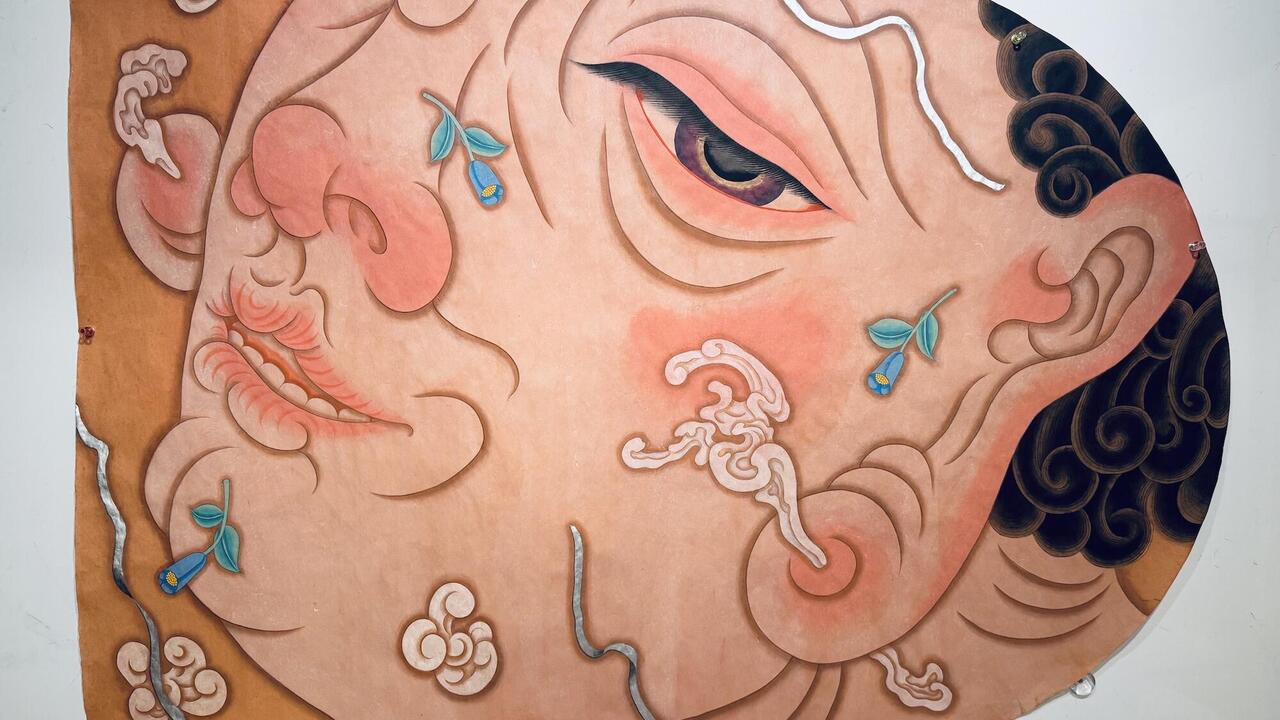Edgard de Souza
Over the last decade the Brazilian artist Edgard de Souza has produced a strong, refined and relatively small body of work. His highly seductive and painstakingly crafted sculptures could be associated with a certain finish-fetish aesthetic typical of the New York 80s generation (Koons, Bickerton, and Vaisman come to mind). Yet there is very little clinical irony visible in the distressing and silent eroticism of the work. Besides his oblique and quite particular treatments of a set of various bodily themes, there is something that distinguishes his work from his peers in the Northern hemisphere. One could very well assume that these perfectly finished works were carried out by a dextrous local craftsman; in fact, it is de Souza himself who spends months in his studio slowly sculpting them. In polishing and sanding down any visible expressive sign of the artist's hands, his activity of sculpting bears a peculiar if not contradictory hand-made and Minimalist formal quality.
This show consisted of eight sculptures bearing more or less obvious human and organic traces. The materials are mostly lacquered wood, but also plaster and fur. The palette is white, pearl and cream. Yet the spectacular cleanliness of the pieces resides only on the surface, concealing deeper and stickier elements. A series of three somewhat abstract drips and drops hanging from the wall are on one extreme of the figurative-abstract axis of the show. These pieces of lacquered wood may resemble sinuous architectural reliefs, fine props for carnival decoration, or elegant, oversized pieces of adornment and jewellery, yet their smooth, pale and iridescent skin and the juxtaposition with the other more figurative pieces suggest male orgasmic secretions gone wild. Another piece consists of an elegant shell-like basin with the same slick and lustrous finish, now in white. With its anthropomorphic proportions, the piece could be a nest some kind of meditational refuge or maternal cavity. Although at first pleasing in spirit and physically capable of holding an adult, it is obviously and harshly uncomfortable. The uncanny syntax of initial allure and subsequent repulsion pervades all the works.
The two most astonishing pieces were on the other extreme of the axis. The first consisted of a life-size, new-born baby boy, flawlessly sculpted in wood. The wood is polished and waxed, displaying its fine grain and sinuous veins, which accentuate the dramatic features of the new-born's first cry. Resting close to the floor on a large, white, plaster base that impedes our close scrutiny, the baby seems at once abandoned, lonesome and statuesque. The piece calls to mind a strong motif in Brazilian baroque wood sculpture: the new-born Jesus. The cardinal icon of religious art in Catholic America is rendered in a frightening, revealing and intimate nudity: the wood grain, the tight grip of the baby's hands, his desperate cry, half-closed eyes, tiny penis and bewildered expression. The realist rendition becomes uncannily repelling and familiar: it's either you or Him.
The second piece consists of two male bodies, sculpted in white plaster, which bow to each other, coupling and becoming one at the expense of losing their heads and arms. Symmetry is gained through mirrored reflection, and the plaster bodies seemed to have half dived into the other side of the looking glass. Standing on a pedestal, the headless figures in fusion evoke more uncanny motifs: the mirror, the dopplegänger, symmetry, primal narcissism, completeness and incompleteness; above all the identification, differentiation and interaction brought about by the dialectical play between self and other.
It could be argued that the most problematic aspect of the show is its blunt homoeroticism and homocentrism. Yet the sticky elements uncannily tackled by these seemingly sterile and gelid works are universal: sex, life, death, the beginning, the end and all that's in between them. One must go beyond the works' lustrous skin, their fine but misleading elegance, to finally realise how messy de Souza's sculptures really are.
















